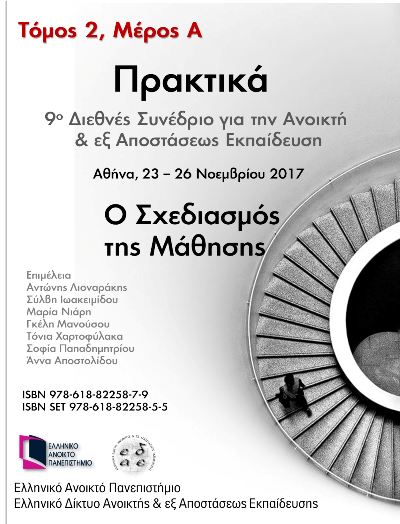Πλαίσιο διαδικασίας για την αντικειμενοποίηση της επιλογής ερωτημάτων τελικής δοκιμασίας μέσω αξιοποίησης των δεδομένων από ενδιάμεσες δοκιμασίες αξιολόγησης

Περίληψη
Η επιλογή των κατάλληλων ερωτημάτων για την τελική δοκιμασία ενός γνωστικού αντικειμένου σε ένα εκπαιδευτικό πρόγραμμα είναι μια απαιτητική διαδικασία, δεδομένων των στοιχείων του πληθυσμού των εξεταζόμενων, των εκπαιδευτικών στόχων που θα πρέπει να αξιολογηθούν και της επιζητούμενης συγκρισιμότητας των αποτελεσμάτων ανάμεσα σε διαφορετικές ομάδες εξεταζόμενων σε διαφορετικούς κύκλους σπουδών των προγράμματος. Στην εργασία αυτή, παρουσιάζουμε ένα πλαίσιο διαδικασίας γα την ανάλυση ενδιάμεσων αξιολογήσεων και την επιλογή από αυτές των κατάλληλων ερωτημάτων για την τελική αξιολόγηση ενός γνωστικού αντικειμένου. Οι ενδιάμεσες δοκιμασίες αναλύονται με τη θεωρία απόκρισης ερωτήματος (IRT) και προσδιορίζονται οι συναρτήσεις πληροφορίας ερωτήματος. Τα κριτήρια για την επιλογή ερωτημάτων είναι οι μέγιστες τιμές των συναρτήσεων πληροφορίας, η κατανομή τους στην κλίμακα ικανότητας θ και η κάλυψη του εύρους των εκπαιδευτικών στόχων. Τα επαναχρησιμοποιούμενα ερωτήματα, μετατρέπονται σε ψευδο-ανοικτού τύπου και βαθμολογούνται σύμφωνα με το επίπεδο επίτευξης των αντίστοιχων σε αυτά γνωστικών στόχων. Η εφαρμογή του προτεινόμενου πλαισίου σε δύο πανεπιστημιακά μαθήματα έδειξε ότι η ολική πληροφορία των δοκιμασιών αυξήθηκε από τις ενδιάμεσες στις τελικές δοκιμασίες ενώ η μέση βαθμολογία των φοιτητών παρέμεινε στα ίδια επίπεδα.
Λεπτομέρειες άρθρου
- Ενότητα
- Άρθρα


